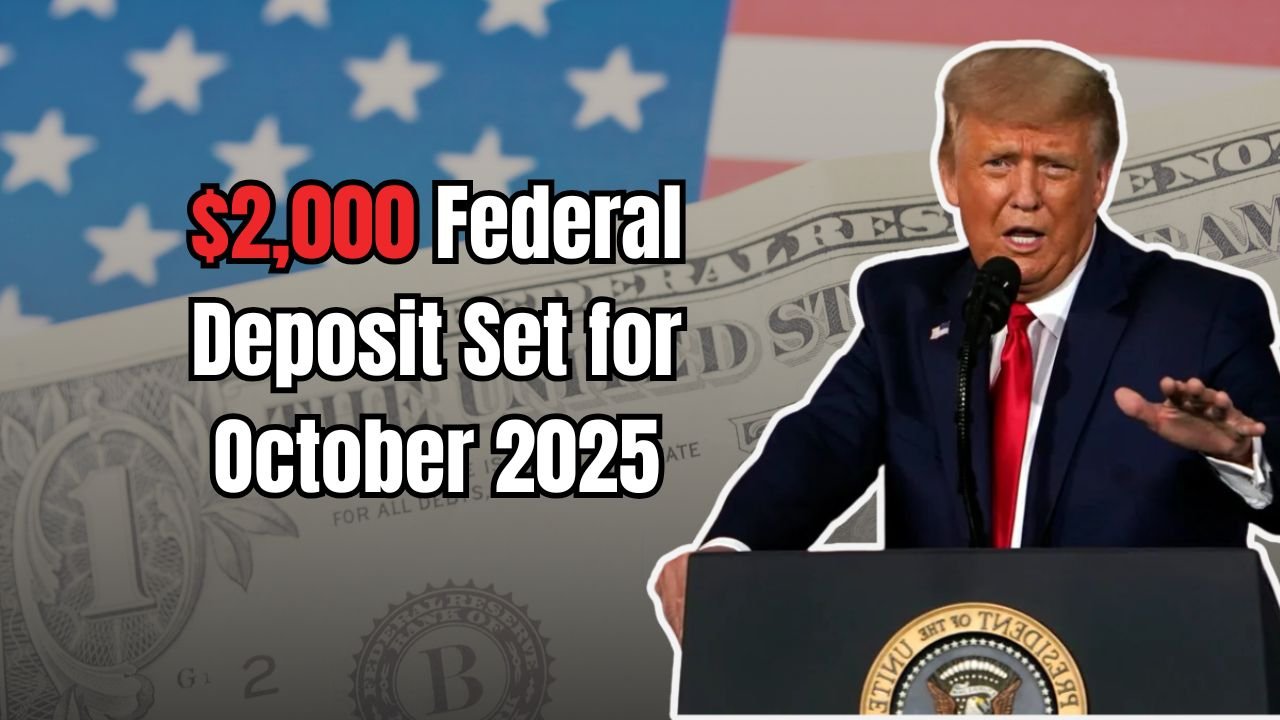The announcement of a $2,000 Federal Direct Deposit in October 2025 has sparked widespread discussion in the United States. This measure is aimed at providing additional financial support to eligible Americans facing rising costs of living, inflation, and personal debt. The federal government has launched this direct-deposit initiative so that retirees, low-income earners and families receive reliable assistance directly in their bank accounts. In this article, we walk you through the eligibility criteria, payment schedule, and official procedures—so that every eligible person knows how to secure their $2,000 direct deposit this October.
What is the $2,000 Direct Deposit?
This payment is part of the government’s ongoing effort to strengthen financial stability among American citizens. The $2,000 federal direct deposit in October 2025 is meant to act as a one-time assistive payment to help those whose budgets are squeezed by persistent inflation and high living costs. The initiative is managed through collaboration between the Internal Revenue Service (IRS) and the United States Department of the Treasury, enabling direct deposits to be sent automatically— eliminating the need for separate applications.
Eligibility Explained
Here are the main eligibility rules for receiving the $2,000 payment:
- Single individuals earning under $75,000 annually.
- Married couples filing jointly with combined income under $150,000.
- Beneficiaries of Social Security, veterans, and those receiving Supplemental Security Income (SSI) are expected to be automatically eligible.
- The IRS and Treasury have teamed up to make payments without an extra application for qualifying individuals.
- Recipients are encouraged to verify that their banking details are correct via the IRS “Get My Payment” portal to avoid deposit delays.
The payment window is anticipated to begin in early October 2025.
Payment Schedule & Process
Here’s a breakdown of how the payment process is expected to work:
| Category | Eligibility Criteria |
|---|---|
| Single Individuals | Annual income under $75,000 |
| Married Couples (Joint Filing) | Combined annual income under $150,000 |
| Social Security Recipients | Automatic eligibility |
| Veterans & SSI Beneficiaries | Processed through federal system, no extra steps |
Payment Date: Starting from October 10, 2025
Mode of Payment: Direct deposit into bank accounts
Eligible Americans can track their payment status via the IRS portal or the Treasury helpline. The IRS “Payment Tracker” tool will show the scheduled payment date, method of deposit and confirmation details. If bank details are missing or outdated, a paper check may be issued instead. To ensure secure and legitimate processing, all official notifications will originate only from domains such as irs.gov or treasury.gov—be wary of scams. Once issued, recipients should see the deposit within 3–5 business days.
Purpose & Impact of the Relief Payment
For many households in the U.S., receiving the $2,000 direct deposit can serve as a vital buffer against inflation and economic pressure. This relief measure helps families cover essential expenses—rent, groceries, healthcare—without being forced deeper into debt. Beyond individual benefit, the government anticipates that the funds will ripple through the economy by boosting consumer spending. The move demonstrates a federal commitment to supporting vulnerable citizens in an uncertain global economic environment. Beneficiaries are urged to stay informed via verified federal sources and report any missing or incorrect payments to the IRS promptly.
Conclusion
The $2,000 Federal Direct Deposit in October 2025 is an important financial assistance initiative that aims to ease the burden of rising living costs for eligible Americans. With clear eligibility criteria, a defined payment schedule, and direct deposit delivery, the process is designed for efficiency and reliability. To make sure you benefit, verify your bank information, stay alert for official communications, and monitor your IRS account for confirmation. This support is not just a payment—it’s a step toward maintaining financial stability for many households.
FAQs
Q1: Who qualifies for the $2,000 federal direct deposit payment?
Eligible individuals include single taxpayers earning under $75,000 annually, married couples filing jointly with combined income under $150,000, Social Security recipients, veterans and SSI beneficiaries. Automatic eligibility is expected for certain benefit-groups.
Q2: How can I track my payment status for the direct deposit?
You can check your payment status using the IRS portal (such as “Get My Payment” or “Where’s My Refund?”) or call the Treasury helpline. Ensure your banking information is up-to-date so that your payment isn’t delayed or converted to a paper check.
Q3: If I didn’t receive the deposit, what should I do?
First, verify that your bank account information on file with the IRS is correct. If you still see no deposit after the expected time-frame, contact the IRS or Treasury via official channels to report any discrepancy. Avoid clicking on unsolicited links—official communications will come only from irs.gov or treasury.gov domains.


